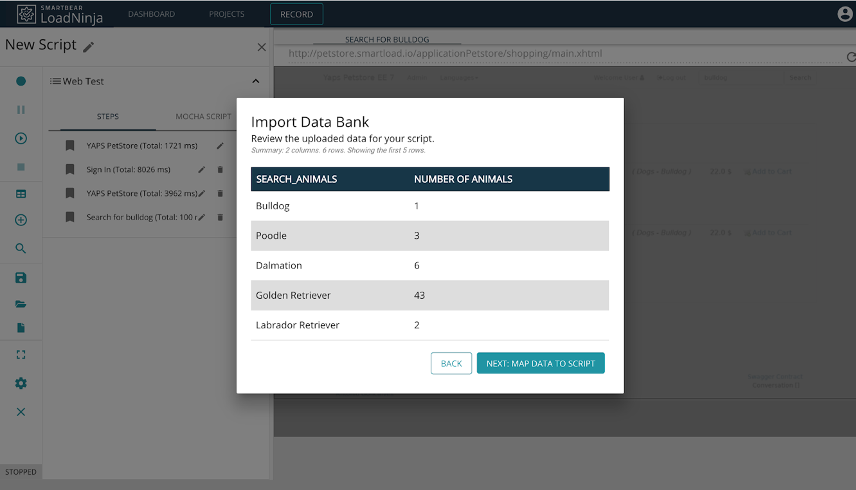Poorly designed load tests can create an environment where costly performance bugs reach production users.
Start with a Good Plan
Effective load testing begins well before writing a single line of code. Since load tests are more resource-intensive than most unit or integration tests, they should focus on the most critical parts of an application with well-defined target outcomes.
Development teams should spend time discussing these factors before building any tests:
- What parts of the application have the greatest impact on performance, user experience, and revenue?
- What are the target outcomes from load tests? Are there service level agreements (SLAs) in place?
- What environment will host load tests? If test environments aren't possible, how can they be run in production?
The next step is defining how the actual tests will be built. Without the right plan in place, it’s easy to write the wrong types of tests or use unrealistic test data to build them. Developers, QA engineers, DevOps, and stakeholders should discuss these criteria since each party may have relevant input.
Some important considerations include:
- Test Types – There are many, and they depend on your goals. For instance, a stress test slowly increases load whereas a spike test provides an instant surge.
- Load Amount – Realistic loads are imperative to ensure that the application performs in production, as well as avoid unnecessary infrastructure costs (e.g. over-preparing).
- Data Strategy – Many load tests require data to accurately measure performance. You should have a strategy in place to replicate production data or generate realistic alternatives.
The final step is choosing the right load testing approach. While there’s no shortage of great open source load testing tools, it's important to spend time choosing the right tool to avoid unnecessary cost or complexity.
Here are some useful categories for considering your approach:
- Protocol vs. Browser-based Tests – Protocol-based tests are ideal for load testing APIs or web applications that don't have many client-side assets. Browser-based tests are ideal for modern JavaScript applications.
- In-House vs. Cloud-based Tests – In-house tests are ideal for companies with an experienced DevOps staff. Cloud-based tests are ideal for smaller companies or those that prefer to keep their employees focused on the product.
- Open Source vs. Premium – Open source tools have the lowest upfront cost (free), but premium tools may streamline workflows and offer a lower total cost of ownership.
LoadNinja is a browser-based load testing tool that bridges that gap between QA engineers and developers. With its web-based interface, you can build complex load tests in a fraction of the time. Meanwhile, developers have access to in-depth reporting that can help them quickly find bugs.

LoadNinja makes it easy to use dynamic data in test scripts
Try LoadNinja for free
See it in action
Scale Up Your Load Tests
Development teams running their first load tests shouldn't immediately scale them to the maximum number of virtual users. After all, if the entire application crashes, you have very little insight into what happened and no way to prioritize what defects are most important.
Instead, the first test should be a baseline test using a relatively low number of virtual users to represent a normal load on the application. The goal is to create a basis for comparison where you can lay future tests side-by-side to identify defects.
After running baseline tests, you can scale up load tests to larger numbers to find new defects. Code or infrastructure changes can be made to address these issues, and the test can be re-run multiple times until there's an appropriate level of performance.
The goal is to scale up the number of virtual users over time to more extreme levels to identify weak points with existing code and infrastructure. These levels may include both sudden spikes in traffic or a slow increase in stress sustained over a longer period of time.
Embrace Full Automation
The goal of load testing is similar to that of any unit or integration test — to ensure you're shipping a high-quality product to users. That means load tests should be run alongside these other tests in a continuous integration and deployment process.
After fixing defects in the existing code base, the inclusion of load tests in a CI/CD environment means that any new code is tested to ensure no new performance bugs. You can also see how performance trends over time and update load levels to account for traffic changes.
Make Your Method Easier
Load testing is a critical part of ensuring a great user experience, but without the proper planning, costly performance bugs can slip through the cracks. Developers, QA engineers, DevOps and stakeholders should work together to plan out load tests and incorporate them into a CI/CD workflow for maximum benefit.
LoadNinja makes it easy to accomplish these goals and realize the benefits with minimal time, effort, and cost. With its web-based recorder, complex load tests take a fraction of the time. These tests can be quickly scaled across tens of thousands of actual browser instances to generate insightful analytics for investors. The load tests can even be integrated into CI/CD environments in just a few clicks.
Try LoadNinja for free
See how easy it is to load test the right way